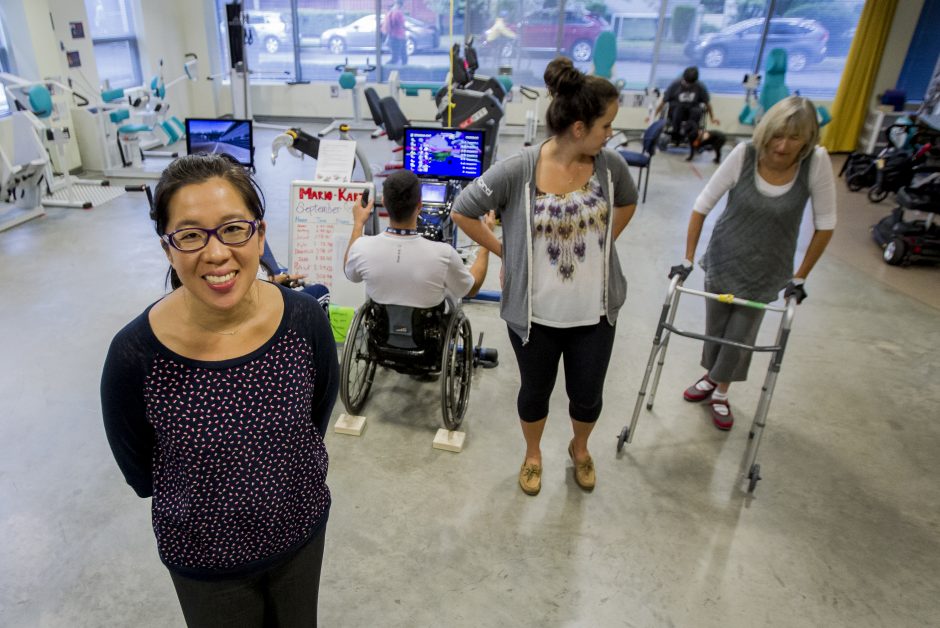 It doesn’t take Tania Lam, professor and researcher with the School of Kinesiology, long to think of an elevator pitch for the research she’s engaged in. “I’ve always been interested in how the nervous system controls our movements, and I look for ways we can improve people’s mobility after they have a spinal cord injury,” she says. “I’m looking for where we can use exercise and physical activity to improve their daily function.”
It doesn’t take Tania Lam, professor and researcher with the School of Kinesiology, long to think of an elevator pitch for the research she’s engaged in. “I’ve always been interested in how the nervous system controls our movements, and I look for ways we can improve people’s mobility after they have a spinal cord injury,” she says. “I’m looking for where we can use exercise and physical activity to improve their daily function.”
And although the incidence of spinal cord injury in Canada is relatively low, the annual socioeconomic burden to the health care system is a staggering $740M. Tania’s team is looking at ways in which we could innovate the way we study paralysis and the act of walking to uncover new results.
This unique path began a long time ago for Tania. “Ever since I was young I wanted to work in health and improve the quality of people’s health. I was focused on the nervous system, the brain is so fascinating to me,” she says. “And I’ve always been so interested in how we walk—it’s such a human thing, to walk on two legs. This is sort of what led me into studying spinal cord injury, because after it’s occurred, the first thing people tend to ask is, ‘Am I going to be able to walk again?’, and it’s just so compelling, as well as devastating to imagine that someone can’t make their way around their world. I think this is what motivated me from the beginning, since it’s such a fundamental aspect of our daily life—the ability to walk.”
Changing the way we study walking
Tania and her team of researchers at the International Collaboration on Repair Discoveries (ICORD) have made big contributions to this area over the years. “I don’t know if we’ve achieved yet, but we’re trying to get people thinking about the body system holistically when they’re thinking about the recovery of walking,” she says. “It’s not just about muscle strength or speed of walking. It’s about thinking about what a person needs to have in their repertoire to effectively navigate the world—so that means considering their sensory system, their fitness.” Until recently, Tania says, the neuro-rehab field has been limited in how it measures walking, and hasn’t accounted for sensation in the bigger picture. “You can’t walk without having proper sensation in your legs, and no one is looking at that. So that’s the main thing, we do have the tools, we’re at the stage where we’re putting that into practice.”
Tania’s research covers both people with incomplete paralysis and complete paralysis. For those with complete paralysis, her team uses the robotic exoskeleton the team has at ICORD. “With this technology, we have the ability to get people up and walking again, maybe for the first time in many years. There are so many health benefits as well as psychological benefits to this,” she says. “Even talking with one of our research participants, when he got in the exoskeleton the first time, he said very nonchalantly, ‘This is the first time in 10 years I’ve been up on my feet.’” These moments are huge for Tania, and keep her deeply invested in her work.
Getting moving because of PARC
The benefits of her work are abundantly clear when you take a moment to see them in action at the Physical Activity Research Centre (PARC) on the main floor of ICORD, where some 350 individuals with spinal cord injury can go to participate in personalized, accessible physical activity. The centre provides Tania’s team the opportunity to conduct research on individuals with spinal cord injury, while providing individuals with spinal cord injury a place to exercise comfortably.
PARC is changing the lives of people with spinal cord injury, and government is taking notice. Now, the City of Vancouver and the City of Surrey are looking to implement some of PARC’s programs into community centres across the city. The City of Vancouver has even purchased arm spin bikes to create more integrative spin classes. “I’ve been really happy to be able to connect with Surrey and Vancouver,” says Tania. “My vision is to see PARC as the go-to place for cities who want to expand their accessible exercise programs.”
PARC is beneficial for everyone involved, including the 30-45 KIN student volunteers on staff at the facility each semester. Tania says that something she has noted over the last while is the distinct relationships that develop between the students and PARC participants. “Many of the students who come to PARC have opened their minds to what it means to have a disability.”
Tania too has benefitted from seeing PARC in action. “I used to lecture on how important resistance training and strengthening your muscles was to my students and I never did that, but I remember being up there every class and feeling like a hypocrite,” she says. “But working with people with spinal cord injury, I’ve seen them with their limitations, and they still find ways to exercise,” she says. “And I thought, ‘How ungrateful can I be to not exercise?’ So I’ve changed that. Now I run every morning and it’s made a big difference in my work life balance; I have a clearer mind.”
Seeing the benefits of exercise in her own life, Tania feels the urge to encourage other people even more strongly now. “Last week I sent out an email to my students giving them information about the midterm, and at the end I said, ‘Don’t forget to get out and get some fresh air and exercise, it’s good for your neuroplasticity and it’ll be beneficial for your performance on the test,’” she laughs.
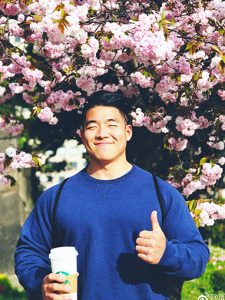
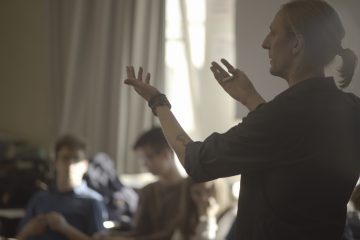
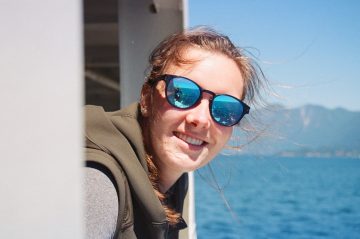
 It doesn’t take Tania Lam, professor and researcher with the School of Kinesiology, long to think of an elevator pitch for the research she’s engaged in. “I’ve always been interested in how the nervous system controls our movements, and I look for ways we can improve people’s mobility after they have a spinal cord injury,” she says. “I’m looking for where we can use exercise and physical activity to improve their daily function.”
It doesn’t take Tania Lam, professor and researcher with the School of Kinesiology, long to think of an elevator pitch for the research she’s engaged in. “I’ve always been interested in how the nervous system controls our movements, and I look for ways we can improve people’s mobility after they have a spinal cord injury,” she says. “I’m looking for where we can use exercise and physical activity to improve their daily function.”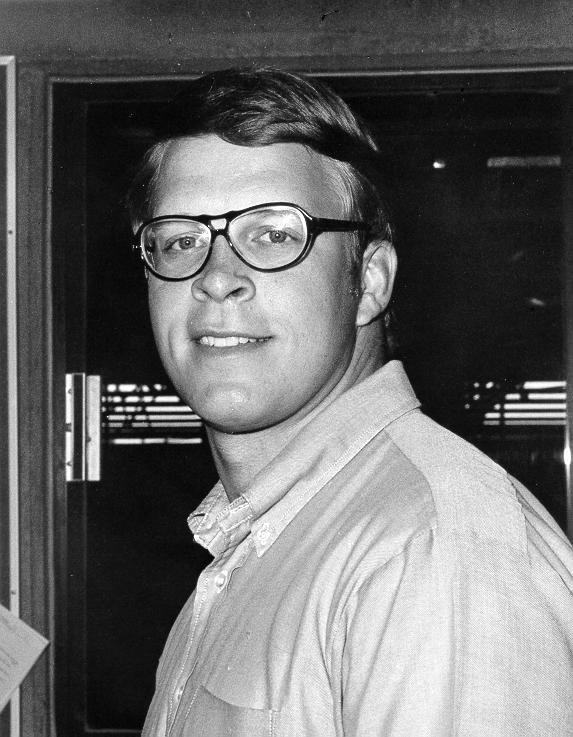
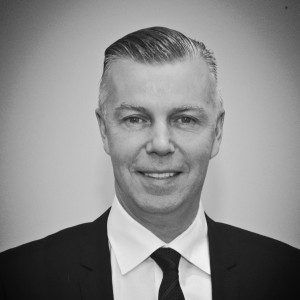 For more than 30 years, as of 2018, David Stadnyk has, in addition to founding many companies, provided leadership, investment and development in the biotech, pharmaceutical and resource sectors. A 1986 UBC graduate in Physical Education Stadnyk played tennis for UBC when tennis was a high-profile sport on campus. Following graduation Stadnyk embarked upon a career in the market and soon established Stadnyk and Partners Venture Capital investing in both pharmaceutical and energy companies from which has flourished his impressive entrepreneurial career.
For more than 30 years, as of 2018, David Stadnyk has, in addition to founding many companies, provided leadership, investment and development in the biotech, pharmaceutical and resource sectors. A 1986 UBC graduate in Physical Education Stadnyk played tennis for UBC when tennis was a high-profile sport on campus. Following graduation Stadnyk embarked upon a career in the market and soon established Stadnyk and Partners Venture Capital investing in both pharmaceutical and energy companies from which has flourished his impressive entrepreneurial career.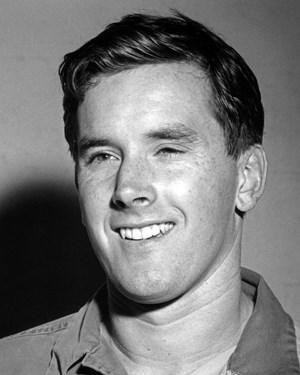 Lee Wright, a 1966 Physical Education graduate (Kinesiology), was one of UBC’s outstanding field hockey players and a member of one of Canada’s notable sports families. Wright played on some of UBC’s most impressive field hockey teams during the early 1960s, emerging as one of the top players in Canada. From 1962 through 1966, Wright was one of six Olympians on the Thunderbird team. During that time, the Blue & Gold, under coach Eric Broom, won five consecutive Vancouver Field Hockey Championships, a stretch that included an amazing 36 game winning streak. The Thunderbirds were recognized at this time as the best club in Canada, playing in the competitive Vancouver league where a good deal of Canada’s field hockey talent existed at the time.
Lee Wright, a 1966 Physical Education graduate (Kinesiology), was one of UBC’s outstanding field hockey players and a member of one of Canada’s notable sports families. Wright played on some of UBC’s most impressive field hockey teams during the early 1960s, emerging as one of the top players in Canada. From 1962 through 1966, Wright was one of six Olympians on the Thunderbird team. During that time, the Blue & Gold, under coach Eric Broom, won five consecutive Vancouver Field Hockey Championships, a stretch that included an amazing 36 game winning streak. The Thunderbirds were recognized at this time as the best club in Canada, playing in the competitive Vancouver league where a good deal of Canada’s field hockey talent existed at the time.